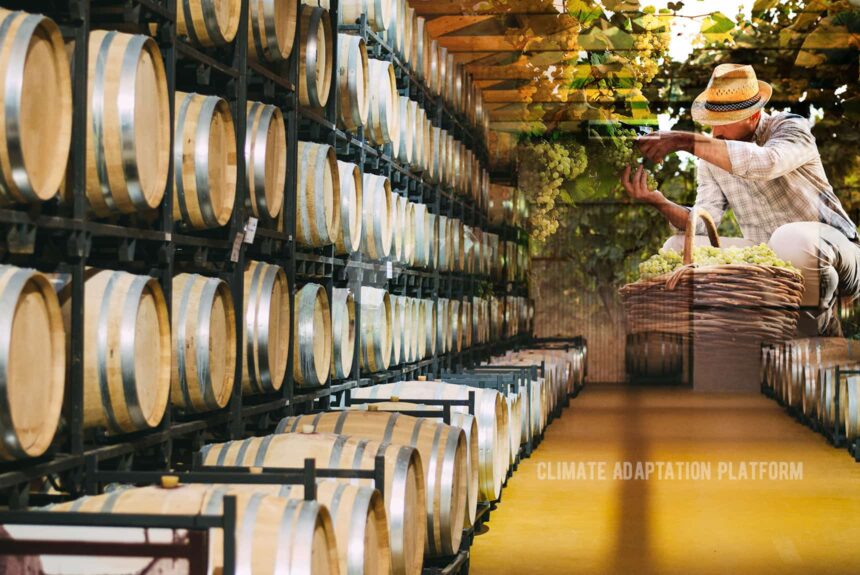A winemaker in Queensland’s Granite Belt shares how he is adapting his farming practices to cope with extreme events caused by climate change.
Mike Hayes, a winemaker now turned consultant in the region, remembers how the wildfires in 2019 damaged his crops, so he cannot bottle them anymore. After three years, he witnessed wild storms and drought, extreme events that he calls “explosive weather conditions”. He said he could not stand to watch the bush dying during one of those droughts (Loftus, 2022).
Mr Hayes says that while natural disasters can cause damage, long-term climate change effects like delayed frost, hotter summer nights, and stronger and more frequent storms significantly impact the quality of wines.
Because of this, 100-year farming practices needs to change. As a consultant for wineries in the region, he is looking for new ways to grow grapes and varieties to cope with the changing climate.
His solution was to change French grape varieties with Italian ones. Italian grape varieties are more able to cope with the region’s changing climate, adding, “So it’s not as if we lose the styles completely; we’re just changing our goal posts.”
Climate change experts agree with Mr Hayes and say that what he is doing is building resilience. They say climate change can impact all sectors in Australia, from agriculture to tourism to health and population sizes.
Social relationships, skills, and motivation build resilience, qualities that regional areas capitalize on and that cities often lack. The ability to rebuild quickly and access health and social service can also boost resilience, but its absence can deepen inequities (Loftus, 2022).
Helping regional areas and cities to transition from fossil fuels to renewable energy to power their economies, as well as investing in health care and education – including the need to understand how insurance works and knowing hazard-prone areas and void developing them. These are ways that people can adapt and become resilient.
In Australia, local governments are exercising their power to prevent developments in high-risk areas, and some regional councils are releasing a road map to guide their economic transition.
Then there is also a need to manage the successful transition from fossil fuel dependence to renewable energy, which will require increased investments in infrastructure, services and working force training to ensure that people are looked after as things change.
Mr Hayes has also been involved with the Queensland College of Wine Tourism vineyard of the future program. He says about the program, “It gives us the ability to look into the future a bit and see what varieties can handle climate change going forward,” he said.
You probably have read news about extreme events, such as devastating hurricanes in the United States, enduring droughts from China to Europe, and record-breaking heat waves in the United Kingdom. Research shows that warming temperatures caused by climate change are even fueling locust outbreaks from Kenya to Pakistan and India.
Climate change is also the largest health threat facing humanity, and it is important that we need to start adapting.
There are numerous ways to adapt to climate change. The Conservation article “What on Earth is ‘climate adaptation’?” explains what climate adaptation is and how it can be done.
Climate adaptation comes in many forms, from building infrastructure like seawalls and raised homes that offer protection from floods to developing technology like early warning systems to give the community sufficient time to evacuate or prepare for extreme events to changing farming practices like choosing drought-resistant crops.
Other climate adaptation solutions include using or harnessing nature’s ability to protect communities and infrastructure from rising seas simultaneously and storms and, at the same time offering many benefits like acting as powerful carbon sinks and improving the coastal ecosystem.
Then there are more radical approaches to climate adaptation – proactive and transformative actions addressing the root cause of vulnerability.
For example, when flood-vulnerable communities have reached the limits of adaptation – when repairing homes or replanting crops no longer works to cope with floods- relocation to safer areas will be the next recourse.
Adaptation solutions like managed retreats and relocation are very costly. In poor countries, the indigenous people who will benefit from this adaptation solution will need the assistance of wealthy and developed countries to do so.
Source:
Loftus, T. (2022 December 4). Granite Belt winemaker Mike Hayes is taking steps to adapt to climate change and wants others to as well. ABC. Retrieved from https://www.abc.net.au/news/2022-12-04/winemaker-mike-hayes-climate-change-adapting-resilience/101717656
Price, K. & McCoy, M. (2022, November 9). What on Earth is ‘climate adaptation’? Conservation. Retrieved from https://www.conservation.org/blog/what-on-earth-is-climate-adaptation



Leave a Reply